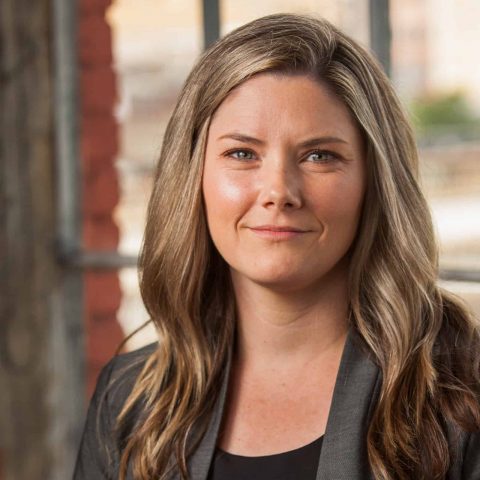Alumni Spotlight: Brittany Foley

Once Auburn alum Brittany Foley realized she had a passion for adaptive reuse and historic preservation, she left Alabama to gain education and experience in the field. She soon returned with new expertise, which she now uses to lead the adaptive reuse sector at design firm Williams Blackstock Architects in Birmingham. “I had the opportunity to leave Alabama but I ended up coming back,” she stated. “Here in Alabama, we’ve had wonderful and meaningful projects that we’ve been able to work on and it’s been really amazing to see the adaptive reuse and historic preservation sector of our practice grow.” Foley, who graduated from Auburn’s School of Architecture, Planning and Landscape Architecture (APLA) with a Bachelor of Architecture and a Bachelor of Interior Architecture in 2009, was promoted to partner at Williams Blackstock last year and was recently named to Birmingham Business Journal’s Top 40 Under 40 list.
Foley has been with Williams Blackstock since 2012 but took a hiatus to go to graduate school at Tulane University. “We did a lot of renovations and I grew to love adaptive reuse, which drove my decision to go back to school because there’s a great deal of technical complexity involved.” Foley did both a thesis and practicum to earn a Master of Preservation Studies with a focus on material conservation. She did her practicum with structural engineering firm Atkinson Noland & Associates in New York City, working on the restoration of the famed Brooklyn Bridge as well as several other historic New York buildings. Foley wrote her thesis on energy performance enhancements for mid-century curtain walls, and it was so well received that she was selected as a student scholar and invited to speak at the Association of Preservation Technology’s international conference.
After finishing her graduate work, Foley returned to Williams Blackstock to build up the firm’s adaptive reuse sector. Some of her team’s most impressive projects include the Historic Federal Reserve Redevelopment, the Historic Greyhound Bus Depot renovation, the Nextec Redevelopment and the Hardwick Redevelopment, all in Birmingham. Foley is currently focused on her work with the Alabama Historical Commission on the preservation of Fort Morgan, west of Gulf Shores, Alabama. The site contains a masonry fort and several concrete batteries and has been a hub of activity ever since the Revolutionary War. Foley is working once again alongside Atkinson Noland to ensure that the structures are sturdy and safe. “This is right up our alley, to be able to look at the fort and batteries from a material conservation point of view,” Foley explained. “There are some areas where we’re going to need to do reinforcement for public safety. There’s a lot you have to consider: the weather, resiliency, flooding, hurricanes and material deterioration. We want to preserve these structures so that future generations can learn and appreciate this history.”
One of the most meaningful projects Foley has worked on with her team members, project manager Suchithra Prabhu and principal-in-charge Matt Foley, has been the Hood-McPherson building in downtown Birmingham. Built in 1914, this former furniture showroom is being redeveloped as an off-campus home for various Auburn programs, including APLA’s Urban Studio, a program where fifth year architecture students can spend a year working on community and neighborhood revitalization projects. As an alum of Urban Studio, Foley was excited to get to work on the project that will house students from her alma mater. “We were really honored to get the contract,” she said. “Being an Auburn and an Urban Studio grad provides me insight and perspective on what makes sense for a downtown presence for Auburn University. Additionally, it was a neat experience to work with my team through the early design and programming process, looking at how to establish that image and considering the user needs and amenities. As someone who sat through those studios for 24 hours a day—you may sleep there!—it’s been an absolute honor to work on.”
Foley says she appreciates the experiences she had in APLA that shaped her to be the architect she is today. “I had the privilege of participating in Rural Studio, Urban Studio and both the architecture and interior architecture programs,” she stated. “I was able to study abroad to gain broader perspectives on modes of practice. I look back fondly and think about how that experience positioned me to feel really good in the way I practice today.” She says she is surrounded by Auburn alumni at Williams Blackstock and appreciates how she and her colleagues work together as a team. “I can’t do any of this alone,” she stated. “I’m only as good as my team. Everyone here at Williams Blackstock has been amazing and that is a big component of my success.”
See more in:
Alumni,
Alumni Recognition,
Urban Studio